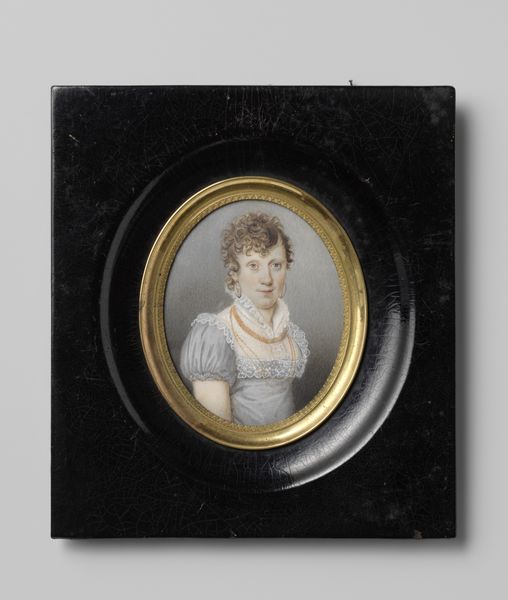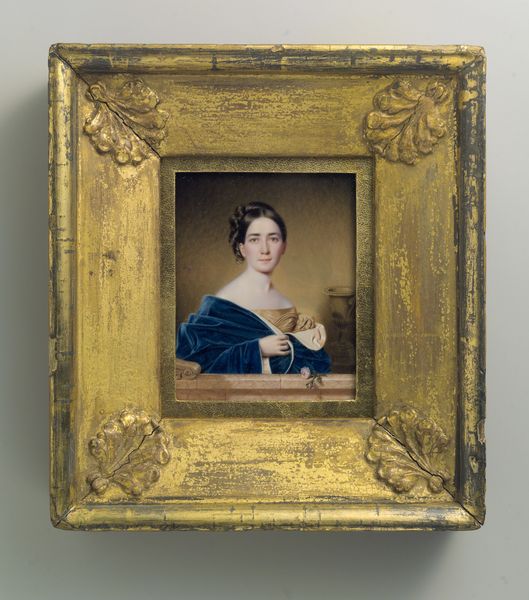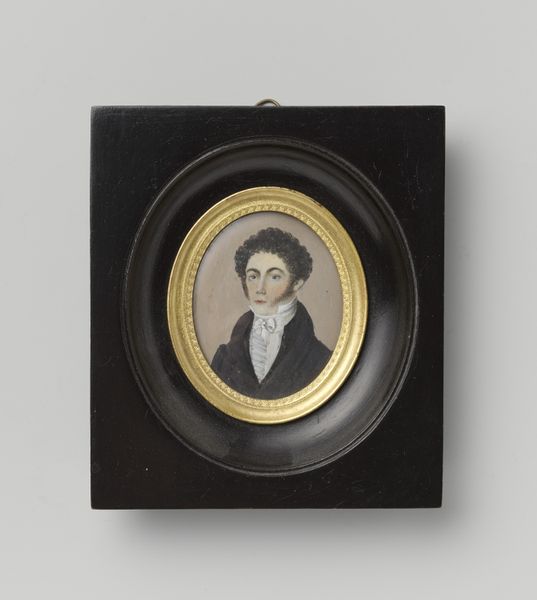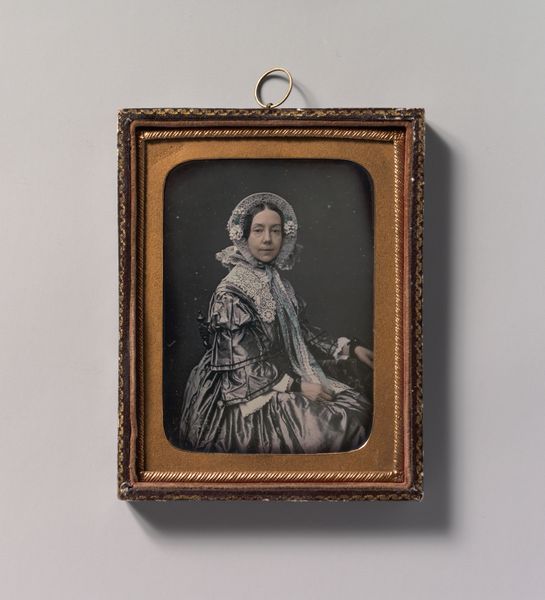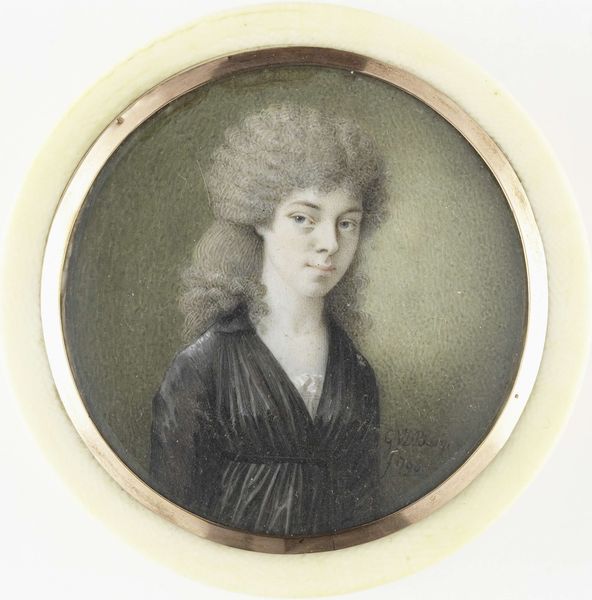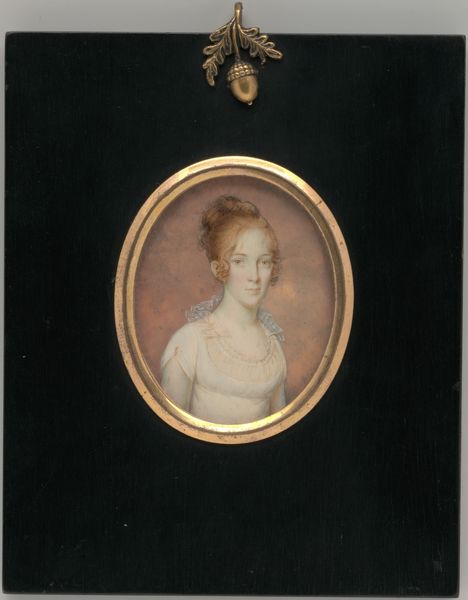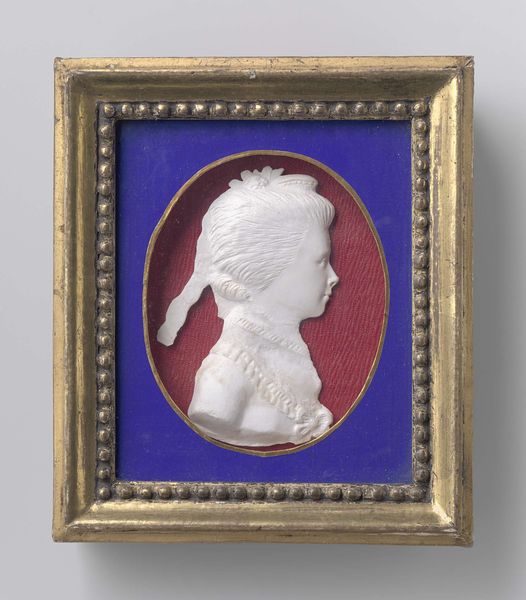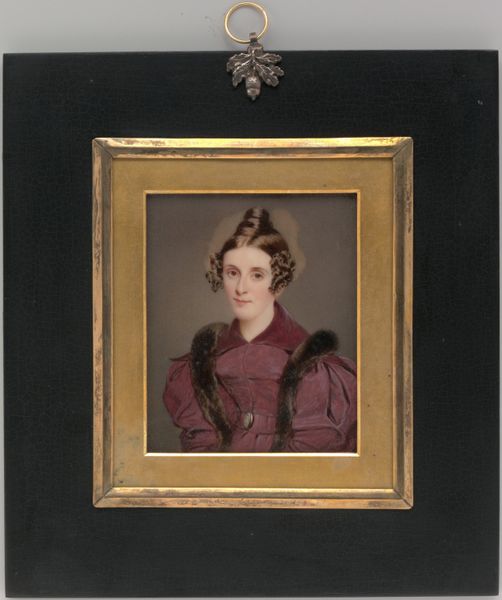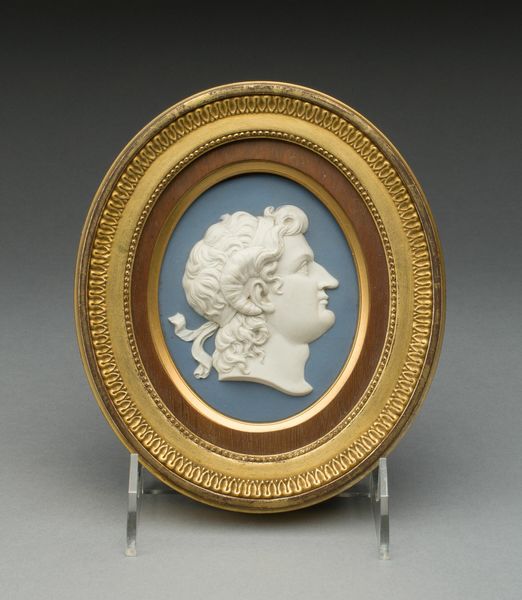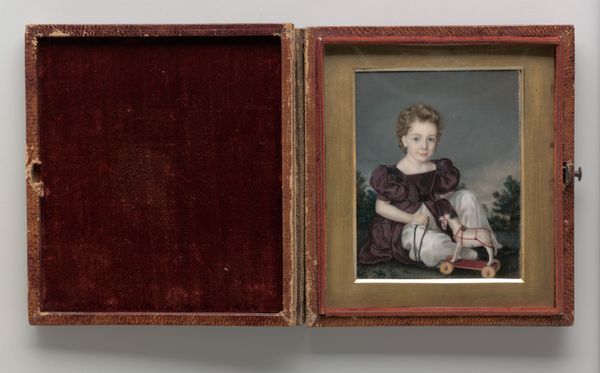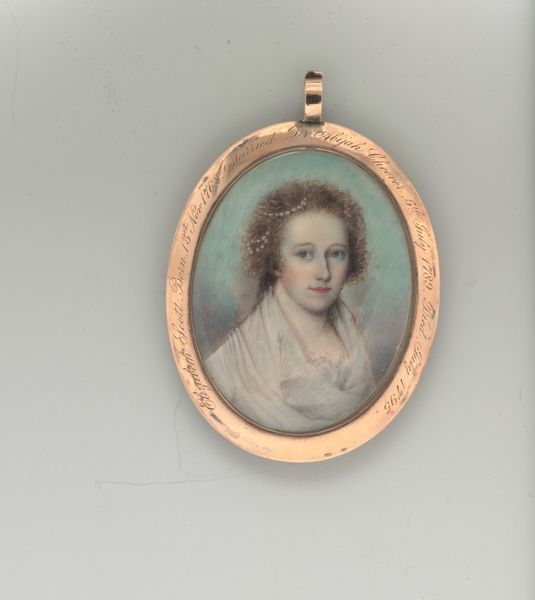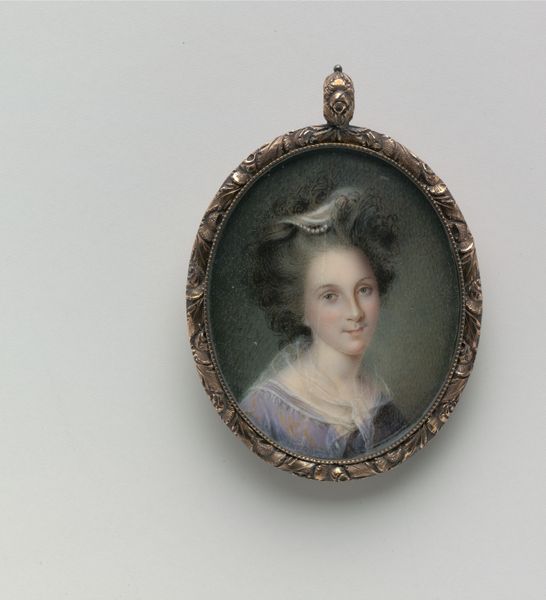
acrylic-paint, watercolor
#
portrait
#
acrylic-paint
#
watercolor
#
romanticism
#
miniature
#
watercolor
Dimensions: height 13.4 cm, width 12.6 cm, depth 1.2 cm
Copyright: Rijks Museum: Open Domain
Editor: So, here we have Jan Lodewijk Jonxis’s "Portrait of a Woman," created sometime between 1799 and 1867. It’s a small-scale watercolor and acrylic paint piece currently residing at the Rijksmuseum. The woman’s gaze is very direct. How do you interpret this work? Curator: The directness of her gaze is definitely compelling. This miniature offers us a glimpse into the visual codes of 19th-century European portraiture. Think about what is emphasized. We see meticulous detail given to her clothing and jewelry – indicators of social standing. Who had access to portraiture at this time, and what statements were they trying to make through these images? Editor: That's a good point. It was certainly an exclusive practice. The clothing is beautiful but somewhat restrictive. Curator: Precisely. We can think about the societal constraints placed on women during the Romantic era, often reflected in the very clothes they wore and in the performative nature of portraiture itself. How much agency did she really have in how she was presented? Does this image celebrate individuality, or reinforce expectations? Editor: That’s fascinating. I hadn’t considered the tension between the subject’s presence and the expectations surrounding her. It definitely brings a different layer to it. Curator: These portraits, like any artwork, were powerful social tools. Considering their original context helps us question the narratives they present and to look critically at representations of identity, gender, and power. Editor: It makes me think about who gets to create images, and who is represented even today. Thanks, this gave me a lot to consider. Curator: Absolutely! That is the enduring power of historical artwork: to ask questions that still challenge us today.
Comments
No comments
Be the first to comment and join the conversation on the ultimate creative platform.
